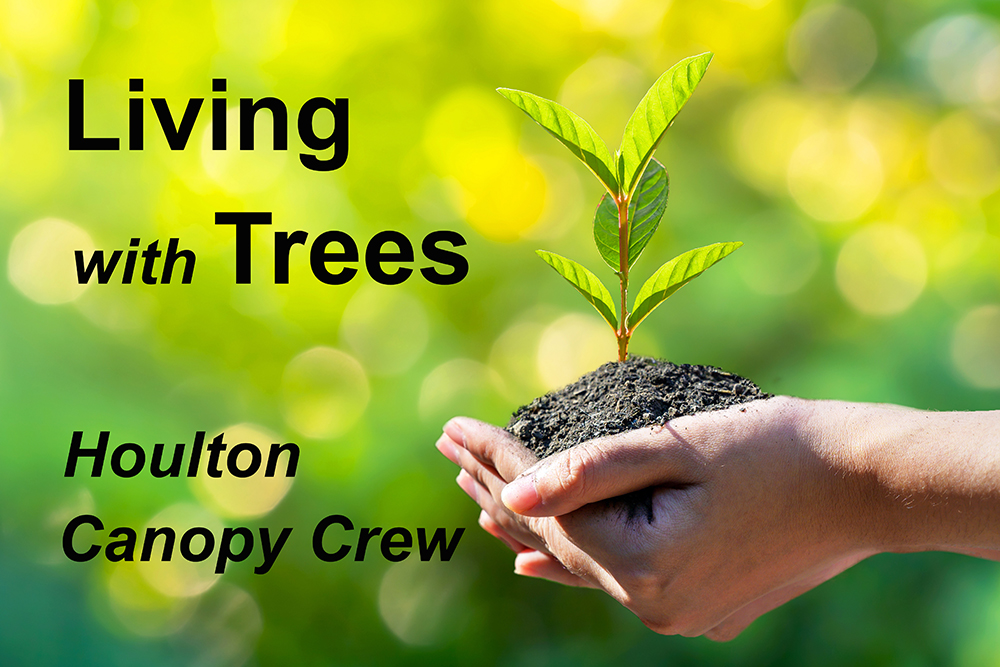Fifty-four years ago, on April 22, 1970, 20 million Americans gathered on college campuses, in parks, along streets and in community auditoriums to honor the Earth. On that first Earth Day, they learned and demonstrated, celebrated and planned, joined their voices in love for the planet — and began new work to save it.
Nearly a century earlier, on April 10, 1872, the people of Nebraska planted nearly one million trees as they came together to celebrate the first Arbor Day in Nebraska City. Arbor Day became an official holiday in Nebraska in 1885, marked by huge parades of schoolchildren and community tree-planting in memory and honor of loved ones.
Today, both holidays are celebrated across the world, Earth Day on April 22, and Arbor Day on the last Friday of April, this year April 26. They provide education, opportunities for action, commitment to nature and the environment, and joy. They bring communities together and spark creative ways to protect and sustain the “blue marble” that is our home.
Earth Day was the brainchild of Gaylord Nelson, a U.S. senator from Wisconsin whose concerns reflected a growing environmental awareness in the country: three million gallons of oil had devastated Santa Barbara, California beaches in 1969; fire on the Cuyahoga River near Cleveland the same year exposed the disastrous extent of water pollution; and the 1962 publication of Rachel Carson’s book, “Silent Spring,” brought the dangers of pesticides to light.
Nelson wanted to energize the country’s new commitment to the natural world with a nation-wide “teach-in,” and he enlisted the help of a young activist, Denis Hayes, to help organize and raise funds. They drew on the commitment of students also engaged in anti-war protests on campus, and on the excitement of faith organizations, public schools, labor unions and businesses, for that first Earth Day celebration.
And the passion took hold: the Environmental Protection Agency was created in late 1970, and within a few years, Congress passed the Clean Air Act, Clean Water Act, and Environmental Education Act. While the early Earth Day work focused on water and air pollution, it has grown to include such environmental areas as biodiversity, climate change and global warming, clean energy, organic food production, and species loss.
A non-hierarchical movement whose name is not trademarked, Earth Day encourages communities to work on their own ecological priorities. Over a billion people in 174 countries now celebrate Earth Day.
Arbor Day is a similarly passionate but more focused mission that began with a man who loved trees. When newspaperman Julius Sterling Morton and his wife
Caroline moved from Detroit, Michigan, to Nebraska in 1854, they landed on 160 treeless acres. And so they began planting — thousands of apple, peach, plum, pear, cottonwood, evergreen, beech trees, and many more. And they encouraged others to set out trees as well. Morton gave speeches encouraging tree-planting, and filled his newspaper with agricultural information and encouragement. Planting trees captured hearts: by the turn of the century, nearly every state had joined the festive observance of Arbor Day.
The work of the Arbor Day Foundation today includes environmental justice, planting trees after natural disasters, urban tree stewardship through a network of grassroots organizations, and reforestation in areas of the world where it is most needed. Working with schools, colleges and communities, the foundation offers science-based education about tree planting and care, identification and benefits.
This year, Earth Day and Arbor Day offer many and varied opportunities to help the environment and discover a new sense of well-being. Earth Day’s 2024 theme is Planet vs. Plastics; Arbor Day is on the way to planting 500 million new trees by 2027. Both earthday.org and arborday.org are abundant with resources and ideas. Or, create your own: change a buying habit, pick up trash, make a donation, increase your awareness, cut down consumption, garden organically, write a letter for climate legislation, advocate for environmental equity, spend time outside. Plant a tree.
Take your cue from those who set these two days for celebration, learning and change in motion. J. Sterling Morton invites us, saying, “Other holidays repose upon the past; Arbor Day proposes for the future.” And Sen. Gaylord Nelson reminds us that “We must recognize that we’re all part of the web of life around the world. There’s a lot more to be done.”
Mary Miller is a member of Houlton’s Canopy Crew, a group committed to caring for trees and gardens.







